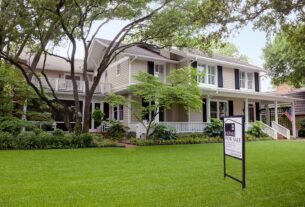The dream of owning a home in Singapore is a significant milestone. It’s a symbol of stability, a cornerstone for family life, and one of the most substantial investments you’ll ever make. But standing between that dream and the reality of collecting your keys is a complex, often intimidating, financial landscape: the mortgage industry.
For many aspiring homeowners, navigating this world of interest rates, loan tenures, and regulatory acronyms can feel overwhelming. The fear of making a wrong move can be paralysing. But it doesn’t have to be. With the right knowledge, securing a mortgage can be a clear and empowering process.
This guide will demystify the Singapore mortgage market, breaking down the essential components you need to understand. We’ll explore the fundamental choice between an HDB loan and a bank loan, decode the different types of interest rate packages, and walk you through the crucial regulations that govern how much you can borrow. By the end, you’ll be equipped to take confident steps toward unlocking your dream home.
HDB Loan vs. Bank Loan
In Singapore, your property financing journey typically begins with a fundamental choice between two main providers: the Housing & Development Board (HDB) or a commercial bank. The path you take depends largely on the type of property you’re buying and your eligibility.
The HDB Concessionary Loan
The HDB Concessionary Loan is a financing option offered directly by the government body itself. It is designed specifically for eligible Singapore Citizens purchasing new or resale HDB flats.
- Key Feature: Stability. The most significant appeal of the HDB loan is its stable interest rate. It is pegged at 0.10% above the prevailing CPF Ordinary Account (OA) interest rate. Since the CPF OA rate has been a steady 2.5% for many years, the HDB loan interest rate has remained at 2.6%. This predictability is a huge comfort for budget-conscious homeowners who prefer consistent monthly payments.
- Eligibility. To qualify, you must meet several criteria, including Singapore citizenship, income ceilings (currently $14,000 for families), and not owning any private property.
- Down Payment. The HDB loan allows for a higher Loan-to-Value (LTV) ratio of up to 80%. This means the down payment is 20%, which can be paid entirely using your CPF OA savings, requiring no cash outlay if you have sufficient funds.
The Verdict: The HDB loan is an excellent option for those who prioritize stability and may not have substantial cash savings for a down payment. Its straightforward nature and predictable interest rate offer peace of mind.
Bank Loans
Bank loans are offered by commercial financial institutions like DBS, OCBC, UOB, and others. They are available for financing all property types, including HDB flats, Executive Condominiums (ECs), and private properties.
- Key Feature: Competitiveness. Banks operate in a competitive market, which often translates to more attractive interest rates, at least initially. They offer a wide variety of loan packages with different features to attract customers.
- Eligibility. While open to Singapore Citizens, Permanent Residents, and foreigners, banks have stricter credit assessment processes. They will meticulously review your income, credit history, and overall financial health.
- Down Payment. Due to regulatory limits, a bank loan has a lower LTV of 75% for a first property. This requires a 25% down payment, of which at least 5% must be paid in cash, with the remaining 20% payable by cash or CPF OA savings.
The Verdict: A bank loan is the go-to for purchasing private property or for HDB buyers who don’t meet the HDB loan eligibility criteria. It can also be a better choice for those who want to take advantage of potentially lower initial interest rates, provided they are comfortable with future rate fluctuations.
Decoding Interest Rates
Once you decide to go with a bank loan, you’ll face another layer of choices: the interest rate package. Understanding the mechanics of these packages is critical, as they directly impact the size of your monthly repayment and the total interest you’ll pay over the loan’s lifetime.
Fixed-Rate Packages
A fixed-rate mortgage offers a locked-in interest rate for a set period, typically between 2 to 5 years. For this duration, your monthly payment remains exactly the same, regardless of what happens in the broader economy.
- Pros: The primary advantage is predictability. You know precisely what you need to budget for each month, making financial planning easier and protecting you from sudden interest rate hikes.
- Cons: This security comes at a premium. Fixed rates are usually slightly higher than the initial rates of floating packages. Furthermore, if interest rates fall, you won’t benefit from the drop until your lock-in period is over.
Floating-Rate (Variable-Rate) Packages
A floating-rate mortgage has an interest rate that fluctuates throughout the loan tenure. The rate is typically composed of two parts: a benchmark rate and the bank’s spread (its profit margin). In Singapore, the most common benchmark is SORA.
Understanding SORA: The Singapore Overnight Rate Average (SORA) is now the industry standard. It’s the volume-weighted average rate of unsecured overnight interbank SGD transactions. In simple terms, it reflects the cost of borrowing between banks. Your loan’s interest rate will typically be based on the 1-month or 3-month compounded SORA, plus the bank’s spread. For example, your rate might be “3M Compounded SORA + 0.75%”.
- Pros: Floating rates are often lower than fixed rates at the outset, resulting in smaller initial monthly payments. If the benchmark SORA rate falls, your interest payments will decrease accordingly.
- Cons: The main drawback is uncertainty. If SORA rises, your monthly payments will increase, which can strain your budget. This requires a higher risk appetite and a financial buffer to absorb potential increases.
Essential Acronyms (TDSR, MSR, LTV)
The Monetary Authority of Singapore (MAS) has implemented several regulations to ensure financial prudence in the property market. Understanding these acronyms is non-negotiable, as they determine your borrowing capacity.
- LTV (Loan-to-Value): As mentioned, this ratio determines the maximum loan amount you can get relative to the property’s value. For a first bank loan, the LTV is 75%. For a second loan, it drops significantly to 45%.
- TDSR (Total Debt Servicing Ratio): This is a critical framework that applies to all property loans. It states that your total monthly debt obligations—including the new mortgage, car loans, personal loans, and credit card balances—cannot exceed 55% of your gross monthly income.
- Example: If your gross monthly income is $10,000, your total monthly debt payments cannot be more than $5,500.
- MSR (Mortgage Servicing Ratio): This rule applies specifically to loans for HDB flats and ECs. It caps the portion of your gross monthly income used for mortgage repayments at 30%. You must meet both the MSR and TDSR requirements when buying an HDB flat with a bank loan.
These regulations are designed to prevent borrowers from over-leveraging themselves and to promote long-term financial stability.
Why a Mortgage Professional is Invaluable
Reading all this, you might feel that the process is a minefield. It’s true that there are many variables to consider: which bank offers the best spread on their SORA package? Which has more favourable terms for early repayment? How do you even begin to compare them all?
This is where a mortgage professional comes in. Instead of spending countless hours approaching each bank individually, you can engage an expert who has the entire market at their fingertips. They provide unbiased comparisons, handle the tedious paperwork, and leverage their industry relationships to find the best possible deal for your unique financial situation.
While navigating this landscape alone is possible, partnering with a specialist can simplify the journey immensely and save you a significant amount of money over your loan tenure. Platforms like The Loan Connection connect you with experienced mortgage professionals who can provide personalised guidance, compare the latest packages from all major lenders, and help you secure the most favourable terms for your dream home. Their service is typically free to the borrower, as they are compensated by the banks, making it a truly invaluable resource.
Refinancing for a Better Deal
Securing your first mortgage isn’t the end of the journey. Most bank loan packages have a lock-in period of 2-3 years. Once this period is over, the interest rate often reverts to a much higher floating rate.
This is the perfect time to consider refinancing—the process of switching your home loan to a new bank that offers a more competitive package. By regularly reviewing your mortgage every few years, you can ensure you always have the best deal available, potentially saving you thousands of dollars in interest payments.
Conclusion
The path to homeownership in Singapore is undoubtedly a detailed one, but it is far from impassable. By understanding the core differences between HDB and bank loans, decoding the various interest rate structures, and being mindful of the key regulatory frameworks, you are already miles ahead.
The single most important decision you can make is to be well-informed. Don’t be afraid to ask questions and seek professional advice. Your dream Singapore home is within reach. With the right knowledge and the right partner, you can turn the key to your new front door with confidence and financial peace of mind.




